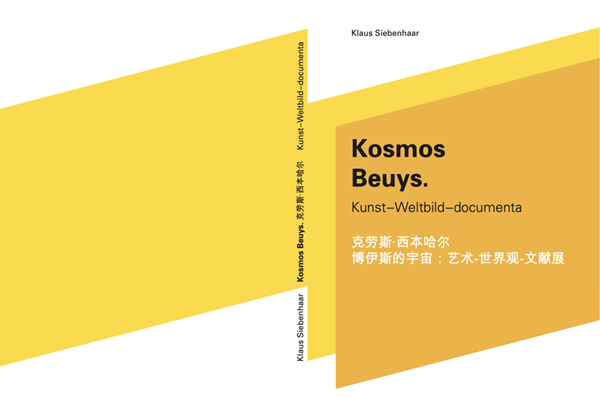
The Beuys Universe: Art - Worldview - Documenta. Series III
From Rabbits, Plants and Things: Beuys and Nature
Author: Prof. Dr. Klaus Siebenhaar
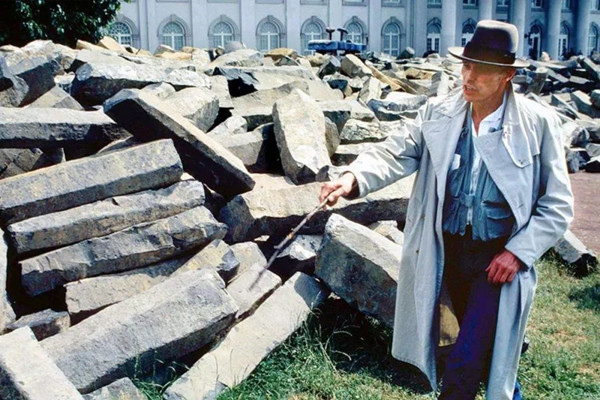
Beuys, 7000 Oaks, 1982-1987
Beuys was a naturalist and nature enthusiast in his own unique way from childhood. Animals, plants, minerals, substances, stone formations - everything caught his interest throughout his life. Without really studying science, he studied the "organic" cosmos of nature in all its facets for and with himself. Above all, he was fascinated by natural chemical reactions as well as physical processes and changes. Beuys was already doing this before Rudolf Steiner influenced his thinking and work. He admitted that nature had a highly symbolic-referential power. Everything in nature had a meaning for him, and was connoted with the "spiritual substance in the world" (August Heuser). In nature, the organic-substantial connects with the immaterial-spiritual; nature, matter, form, spirit are inseparably connected with each other. Not only in his major ecological projects such as “Defense of Nature” (“Difesa della Natura”) in the southern Italian mountain village of Bolognano in the 1970s or the massive “7000 Oaks” project in Kassel from 1982 onwards, he saw nature and animal as "Human organ". His inquiring curiosity and engagement with the world of flora and fauna found expression in his art early on.
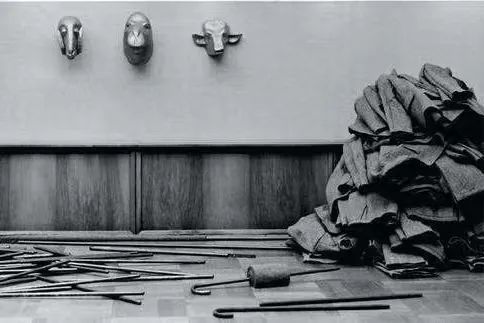
Joseph Beuys, Feuerstätte II, 1978-1979
"For Beuys it seemed clear that mankind senses that animals and plants are their relatives." It was a symbiotic "love affair" among equals for Beuys from the very beginning. Completely in keeping with his understanding of his extensive mystical, philosophical and scientific sources of inspiration, nature was for him a teacher and field of knowledge of transformation processes, metamorphoses, as well as a collectible and visual object. Like Steiner, Beuys was also under the spell of Goethe's scientific writings. Goethe's passion for collecting all kinds of plants, stones and minerals was just as much a model for Beuys as his methodical approach based on observation, experiment and reflection, as well as his concrete and objective thinking. Beuys was far removed from the abstract and rational; he sought movement, currents and sources of energy, which he found in abundance in nature. His leitmotif of the transformative energy of the organic can be derived from this. All states of aggregation ("warm pole - cold pole"), their flowing as well as stabilising forces are to be studied in nature. And nature provides the "forms" and creative principles, whereas the key to a "good" world and society lies in its "organic" self-organisation and “sculptural" directional force. This is especially true for Beuys' formative circulatory system, the "idea" of understanding spiritual, economic and social circulation processes as in a bloodstream, as Beuys paradigmatically demonstrated at documenta 6 by combining university educational institution and Honey Pump at the Workplace: Man - work - basis of nature.

The Documenta 7, Joseph Beuys-Billboard of 7000 Oaks
Like Steiner, Beuys also assumed equal co-existence of four "realms": minerals, plants, animal and finally mankind.
Beyond specific characteristics such as immobile stability, growth and prosperity, free instinctive movement or self-awareness and morality form for Beuys a common ecosystem that is endangered today. Nature as an "energetic effective space" (Beuys) actively influences and shapes man and is responsible for his "soul salvation” and "SOUL METEOROLOGY" (Beuys): In this spiritual or "spiritual-scientific" concept of nature developed by the alchemists and subsequently by Rudolf Steiner, plants and especially animals advance as representatives of all supersensible, transcendent forces.Beuys drew from this the "flow and energy relationships" that constitute his artistic and social concepts. His complex pictorial and spatial thinking always focused on the transforming, circulating, yet also self-organising and self-healing potential of nature. Without nature, there is no free human life. For this reason alone, Beuys demanded: "I want to make these animals and trees legally capable."
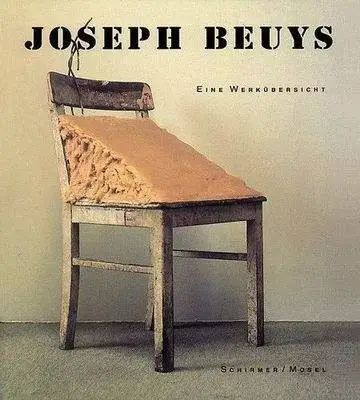
Joseph Beuys, Fat Chair, 1964
Animals played a special role in this anthropologically shaped worldview and understanding of nature. It is no coincidence that Beuys' longest and most intense friendship was with Heinz Sielmann, the legendary pioneer of modern wildlife film and television star. He was Beuys' supervisor during the Second World War and hired him as a camera assistant for his first post-war wildlife film from 1947 to 1949. In addition to his own studies, Sielmann became an inexhaustible source of zoological and biological knowledge for Beuys. And he shared with his scientific mentor and "private professor" his activist commitment to wildlife and environmental protection. Even more radical than Sielmann was that Beuys quite often saw in animal a better human being, above all the natural antithesis to the soulless, materialistic, egoistic, coldly rationalistic human being in capitalism. Beuys emphasised: "Even a dead animal retains stronger powers of intuition than many human beings with implacable rationalism."
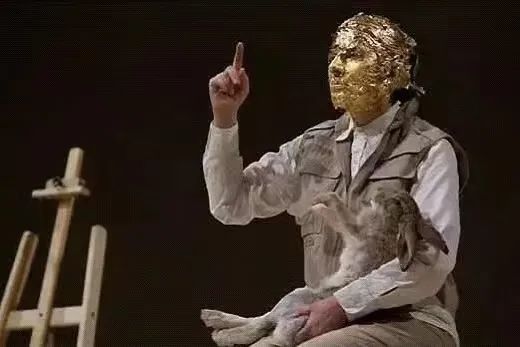
Joseph Beuys, How to Explain Painting to a Dead Rabbit, 1965
For Beuys, for example, the stag becomes a multi-layered symbol for suffering, spiritual loss, threat to the soul, as well as prospect of redemption and recovery. Beuys' love of rabbits is similarly symbol-laden and ambiguous, taking on partly identificatory traits: "I am not a human being, I am a hare.” For Beuys, the hare is an "external organ", a symbol of "incarnation", and the relationship to birth: "For me, the hare is the symbol of incarnation. Because the hare does in reality what human being can only do in thought. It digs itself in, and it digs itself a hollow. It incarnated into the earth, and this alone is important.” Whether as a “dead hare” to which art is explained, as a “peace hare” resurrected from melted Tsarist crown or as light-bringer of the Tatars, for Beuys, the eternally hunted and endangered hare embodies life and the will to survive. It also connects Europe with Asia. The fact that Beuys was concerned with more than a religiously tinted incarnation of the creature in his veneration is revealed in a lasting way in his famous performance “I like America and America likes me” (1974), when he spent several days with a coyote in the René Block Gallery in New York without having set foot on American soil.
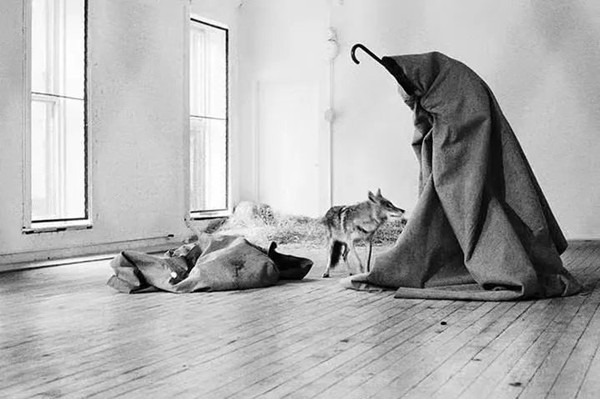
Beuys, The coyote: I like America and America likes Me, 1974
The coyote, as a sacred animal of the Native Americans that stands for luck, courage and the invisible, but was despised and hunted by the European immigrants and colonisers, embodied for Beuys the critique of European settlers’ behavior. The coyote becomes the symbol of a political critique and of social aberrations. Beuys was therefore seeking friendship and spiritual affinity to the animal through temporary and peaceful coexistence: "The spirit of the coyote is so powerful that no human being understands it or what it means for the future. For the present, coexistence with the myth-laden animal is a protest and disclosure of the American "wound": "The whole American trauma with the Indian, the ‘Red Man’. One could say that there is still a score to settle with the coyotes. Only then can this trauma be lifted."
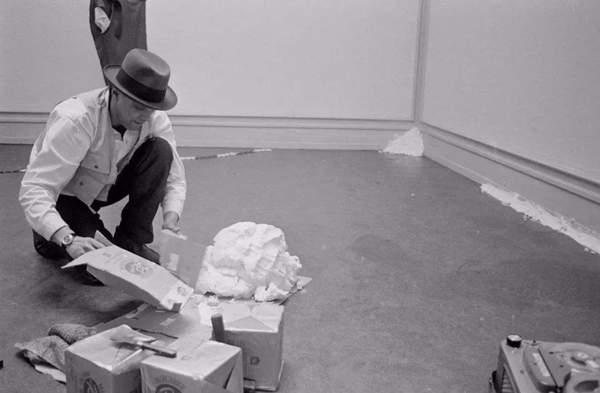
Joseph Beuys' "Social Sculpture"
Thus, for Beuys, the "whole" is fulfilled again in his concept of nature: human being, social organism, thinking, acting, i.e., the whole dimension of his “Expanded Concept of Art" and his “Theory of Sculpture". Beuys extended his unconditional respect as a person and artist for nature to the inherent right of all things. In addition to the sovereignty rights of nature, the "thing" as a measure of man joins the design process claiming its own claim: “I never decide whether it is finished, but the object must come forward and say: I am finished. (Joseph Beuys)
